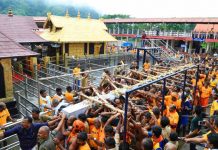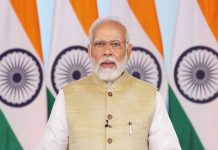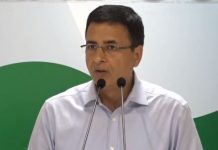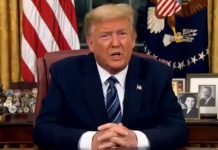The country’s health system has completely collapsed, people are literally gasping for breath with oxygen running out and the states and Centre seemingly at loggerheads

From being absent to I am back to I can do it has been a long haul: the country’s health system has completely collapsed, people are literally gasping for breath with oxygen running out and the states and Centre seemingly at loggerheads. Despite the calamity which has taken a heavy toll, politics is playing out in full steam.
The people are angry and squarely blaming the Government for the mess it is in, following the second surge of the virus hitting India. Of course, there is content in the argument that the second surge was like a tsunami that not only surprised everyone but took a heavy toll on everyone’s nerves and hundreds of lives. As there is in the fact, that it is the people who let their guard down. Therefore, to now point a finger at the government is not only passing the buck but being highly irresponsible, unreasonable, and insensitive. As citizens, we are equal stakeholders in the well-being of the nation and its people and cannot always hold the government responsible or make it accountable for our misdeeds.
However, what demands an explanation is the Government’s complete absence from the scene when the dire need was to take control of the situation and lead from the front. In this context, Prime Minister Narendra Modi is in the eye of a storm.
For one, the Government was quick to announce the “endgame” of the pandemic in India: as early as March this year. Even though statistics backed this optimism, with a sharp dip in reported infections, it was enough to signal to the people that things would soon be back to normal.
The Election Commission, too, did its bit by announcing state- elections by the end of February which meant hectic campaigning in five states where the multi-phased elections would see people coming out in large numbers to listen to politicians and also turn out to vote. Consequently, the BJP, as other political parties, pulled all the stops to see that their rallies draw crowds: crowds that meant a complete violation of Covid-appropriate behavior and defying the safe distancing norm. Needless to say, masks were neither mandatory nor considered necessary. Addressing several rallies was Prime Minister Modi himself who unwittingly signaled to the people that Covid norms could be given a go-by. It is pertinent to point out that the Madras High Court pulled up the Election Commission stating that it was singularly responsible for the second wave of Covid: “Your officers should be booked on murder charges probably”, the Court said, given that the crowded campaigns continued even while the virus cases were rising exponentially.
It can be argued that the Election Commission announced the elections when the infections were at an ebb. But what it cannot defend is looking the other way when infections were rising. Their failure to step in and curb people assembling in large numbers when it was necessary is something that can neither be forgiven nor excused. Probably there was a method to this madness: had the Election Commission stepped when it should have, it would have meant political disruption or restricting crowds. In the Indian context, crowds can do what door-to-door campaigning cannot achieve. The frenzy is important in wooing the electorate. The BJP has always cashed in on projecting Prime Minister Modi as a star campaigner: crowds being the hallmark of his rallies. The EC’s diktat would have been a damper.
The Election Commission did step in but it was too little too late. It was on April 16, that the EC curbed campaigning for the final phases of the West Bengal Assembly elections. It suddenly woke up to the “unprecedented health concerns” and curtailed the period of the campaign in “larger public interest”. The TMC had requested the EC to merge the last three phases to a single-phase but allow full campaigning. The EC did just the opposite: continued with its decision to conduct the poll in three phases but curbed campaigning.
Those critical of the EC’s allegedly dubious role slammed it on grounds that “someone else,” read BJP, is writing the EC’s script. The Trinamool Congress, or TMC, is on record stating this. It would be indiscretion not to read between the lines and assess the timing of the EC’s order. By April 16, when the curbs were introduced, India was facing a calamity. There was little reason for the EC to wait that long. Neither is there any explanation on why it didn’t step in a few weeks earlier given that the signals of what lay ahead were crystal clear as early as March. The way things were unfolding, every hour was crucial. In the face of this, for the Election Commission to remain a mute spectator defies logic. Doing it a month later is like dangling a carrot to the toothless.
One view is that the EC chose its timing: chose it to suit the powers that be or to quote a TMC leader, “its scriptwriters”. It is a given that the issue of Corona would dominate campaigning in the last phases of the West Bengal elections. The government’s failure would be slammed by the Opposition parties especially the TMC. They would cash in on Modi’s absence in governance and his presence in political rallies: something the BJP would like to avoid and fire-brand Mamata Banerjee could cash in on. The last phases of campaigning are usually decisive and given that the second surge and collapse of the health system is top of the mind, it would bring Modi government’s mishandling of it to the fore: something the BJP would prefer avoiding. In this context, campaigning curbs would come handy and perhaps work to the BJP’s advantage. As against this, it robs the Opposition, particularly the TMC, of flagging governance failure and target Prime Minister Modi.
As for the Kumbh Mela, organized by the state government of Uttarakhand, the less said the better. Chief Minister Tirath Singh Rawat’s welcome call to devotees with a rider that there will be no restrictions was a sure recipe for disaster. By his own admission, on one of the “auspicious days” in the calendar of events, some 34-lakh people bathed in the Ganges. Given that it is a BJP ruled state, one word from the Prime Minister could have put an end to the religious festivities that saw people converging in large numbers to take the “holy dip” in the sacred rivers. By the time Prime Minister Modi stepped in and called for “symbolic festivities” to be observed, it was far too late.
It is true that amid the pandemic the Kumbh Mela was shortened to 45 days from the usual four months: from March 11 to April end. But then this was also the period when Covid cases were rising. Therefore, the PM’s call was as symbolic as his underlining the need for keeping the festivities to a bare minimum.
That Modi’s writ runs is evident from the fact that one telephone call to seer Aydheshanand Giri did the trick. The Swami tweeted that following Prime Minister’s appeal the people should avoid coming for the snans, bathing. Against this backdrop, why the Prime Minister lost precious time in “appealing” to the seers is a million-dollar question.
One explanation is that for the saffron party both religion and politics are paramount: all else is pushed to a second position. Therefore, it times its moves rather well, be it allegedly signaling to the Election Commission when to act or telling the seers when to withdraw. And this it does when its own purpose is well served be it political campaigning or religious posturing.
In the first, a state like West Bengal was at stake, and in the second, the anger of the devotees: both factors the BJP could not afford to toy with. Had it compromised on campaigning it may have frittered away political advantage and were it to crack the whip to tone down religious festivities, it would have hurt the Hindu sentiment. Pitched against this was the health of the common people which the BJP decided to address after its first two priorities. It is significant to point out that the elections in Uttarakhand are due early next year and to tamper with the Kumbh Mela may have proved politically counter-productive.
Having addressed the two major concerns namely politics and religion, the Prime Minister staged a come-back. And how did he do that: through a 20-minute address to the nation wherein he said little and promised even less. By the end of the address, he left the nation wondering what to make of what the Prime Minister had said. It was neither a feel-good nor a way-forward kind of speech. There was, to put it simply, no roadmap on how to combat the second surge challenge.
There was, however, a political message: that I am back and, once again, will steer things. This followed several rounds of meetings with stakeholders be it oxygen suppliers, pharma companies, or state Chief Ministers. Suddenly the once-absent Modi was omnipresent even as patients cried for oxygen or crucial drugs medicines went missing from the market. Immediately task forces were geared up, friendly countries contacted to send in oxygen and the Air Force drafted in to transport oxygen tankers. Modi, it was clear, was back at work. What good this may do or not remains to be seen but some questions need answers: Where were you Mr. Modi when your countrymen needed you the most? Where were you when the situation started deteriorating? Why didn’t you step in and at least attempt to save the disaster that was waiting to happen? Why was the health infrastructure allowed to collapse? Why did you wait till bodies began piling up?
Against this backdrop, whatever Prime Minister Modi may do to retrieve a situation that is clearly out of control, he will be unable to wash off his sin of absence when his countrymen needed him the most.
tehelkaletters@gmail.com













